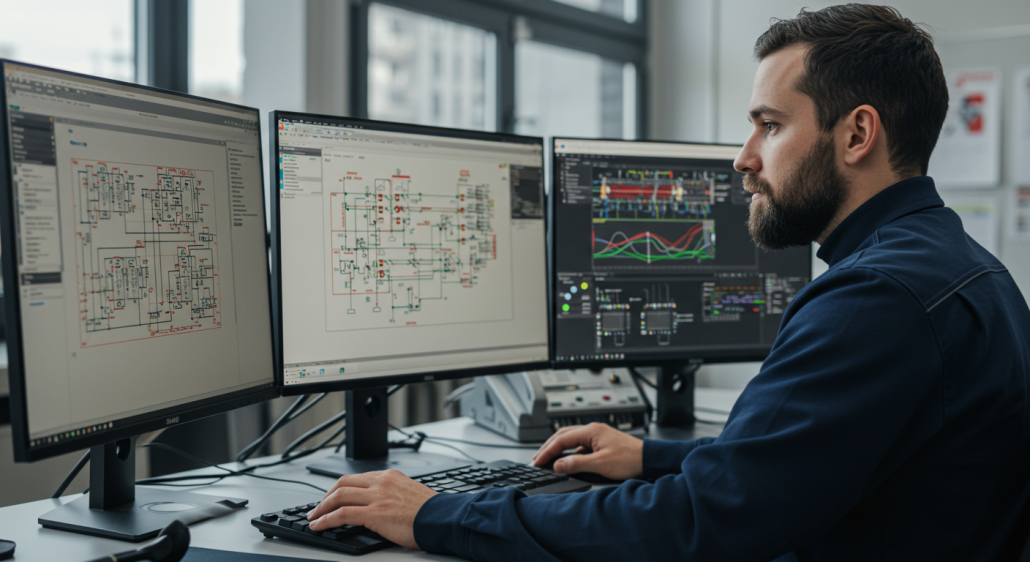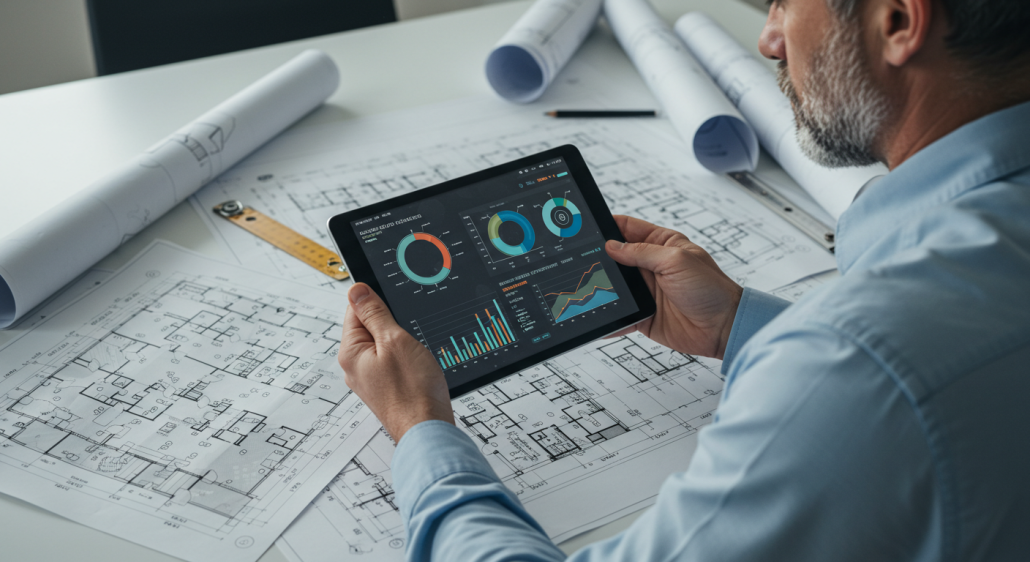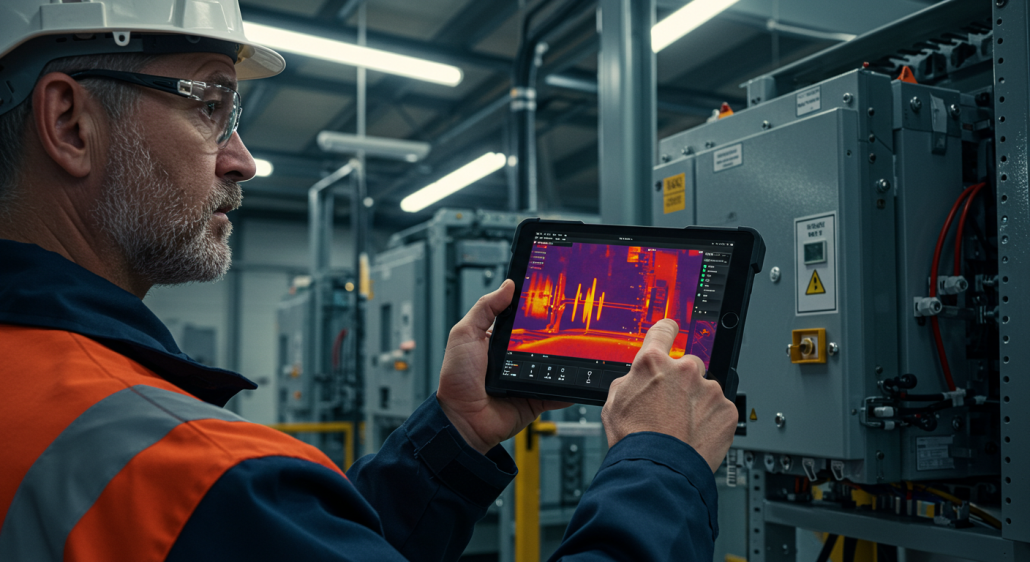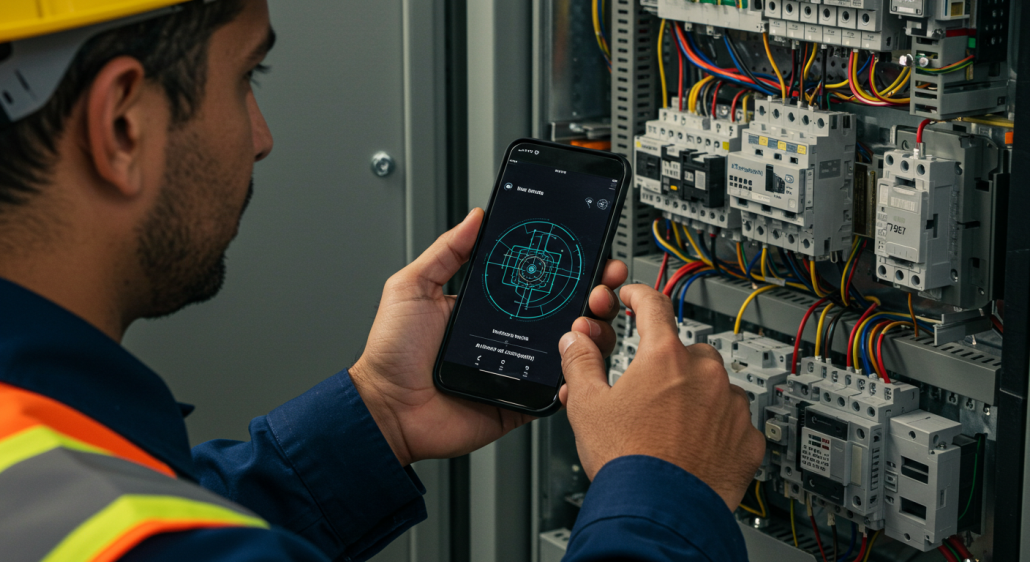AI Meets the Trades
How Electricians Are Using Artificial Intelligence to Improve Facility Efficiency and Safety
How Electricians Are Using Artificial Intelligence to Improve Facility Efficiency and Safety

AI has the Potential to Enhance the Capabilities of Electricians

Automated Design & Layout Tools

Estimating & Bidding Assistance

Smart Diagnostic Tools & Wearables

Energy Audits & Load Analysis

Wire Identification & Electrical Component Recognition
For building owners and facility managers, the integration of AI into the electrician’s workflow translates into several key advantages:
Faster Response Times: With AI-enhanced diagnostics and planning, electricians can respond to service requests more efficiently—minimizing downtime and disruptions to your operations.
More Accurate Budgeting: From project estimating to maintenance forecasting, AI helps reduce guesswork and cost overruns.
Improved Safety: AI tools identify hazards early—whether through predictive maintenance alerts or thermal imaging—which reduces the risk of electrical fires and equipment failure.
Sustainability and Efficiency: AI-driven energy audits and load balancing help optimize power use, support green building initiatives, and cut utility costs.
Digital Reporting and Transparency: With cloud-based platforms, facility managers have a real-time view of the electrical systems, maintenance logs, and project updates—no more wondering what’s behind the panel or waiting days for a service report.
While the idea of AI may seem abstract or futuristic, its applications in electrical work are becoming both practical and essential. Whether used in a contractor’s office or on-site at your facility, AI is helping electricians deliver faster service, better planning, and more reliable results. Here’s how.
Before the first wire is ever pulled or conduit mounted, electricians today are using AI to lay the groundwork for more accurate and efficient projects.
1. Automated Design and Layout Tools
AI-powered software can now automatically generate electrical system layouts for new construction or renovation projects based on digital blueprints and project parameters. These programs take into account factors like building codes, load requirements, and even energy efficiency goals.
For instance, when designing a lighting system for a large office building, AI tools can analyze the building’s dimensions, occupancy patterns, and natural light exposure to create an optimized layout. This speeds up the design phase and ensures optimal light distribution, reduced energy use, and compliance with code.
2. Estimating and Bidding Assistance
AI-enabled estimating software helps contractors generate accurate project bids by analyzing historical data, material costs, labor hours, and scope of work. Rather than relying solely on human experience, these tools offer real-time insights based on thousands of past projects and current market conditions.
This translates to more predictable project costs for building owners and fewer change orders down the line.
3. Predictive Maintenance Planning
Many electrical service companies now use AI tools to manage maintenance schedules for their clients. By analyzing historical performance data and industry benchmarks, AI can predict when components like transformers, circuit breakers, or lighting systems are likely to fail.
Facility managers benefit by receiving timely service recommendations before problems occur—minimizing downtime, protecting equipment, and reducing emergency repair costs.
The impact of AI doesn’t stop at the office. Out in the field, electricians are using AI-enhanced tools and platforms that improve accuracy, streamline troubleshooting, and increase jobsite safety.
4. Smart Diagnostic Tools and Wearables
Modern electrical testers and thermal cameras often come equipped with built-in AI. These tools can detect overheating panels, identify phase imbalances, and diagnose circuit faults faster than ever before.
For example, AI-driven infrared cameras used on switchgear or control panels can recognize thermal anomalies that may indicate an impending failure—even before it’s visible to the human eye. The AI interprets the image and flags the issue, enabling proactive intervention.
Some electricians also wear AI-assisted augmented reality (AR) headsets or smart glasses. These devices overlay digital instructions and schematics on the real-world environment, guiding the technician through complex tasks hands-free. For a facility manager, this means fewer errors and faster service.
5. Voice-Activated Assistance and Digital Workflows
Hands-free voice interfaces powered by AI (such as integrations with Alexa for Business or custom assistant apps) are being used to retrieve documents, safety protocols, or equipment manuals on the fly. Imagine an electrician in your data center being able to ask, “What’s the amperage rating for Panel B?” and receiving the correct answer instantly—without flipping through paperwork.
Paired with digital workflow platforms, these systems ensure electricians document their work in real time. They can upload images, annotate issues, and file reports that are immediately available to facility managers via a cloud dashboard. The result? Better communication, faster problem resolution, and a digital history of the work completed.
6. AI-Powered Energy Audits and Load Analysis
Electricians and energy consultants are now using AI-based analytics to conduct energy audits and monitor electrical load behavior in commercial buildings.
These platforms connect to building management systems (BMS) or smart meters to analyze trends in energy consumption. AI algorithms can detect abnormal spikes, inefficient usage patterns, or equipment that is drawing more power than necessary—often revealing hidden issues that would go unnoticed in manual reviews.
In one example, an AI system monitoring an office building flagged a constant overnight energy drain traced to an old HVAC system that had failed to shut down properly. Fixing the issue led to a 12% monthly savings on the energy bill.
The pace of AI development continues to accelerate, and several emerging technologies are on the horizon:
Autonomous Drones for Inspections: Already used in solar field maintenance, drones equipped with AI and cameras can inspect hard-to-reach electrical infrastructure like roof-mounted panels or high-voltage lines—reducing the need for ladders or lifts.
Digital Twins for Buildings: Some contractors are building digital replicas of electrical systems—virtual models that use real-time data to simulate performance and test changes before they’re made in the real world. This technology could soon be common in major facilities.
Generative AI for Custom Code Compliance: AI tools that can interpret local and national electrical codes may soon help contractors automatically verify whether installations meet complex legal requirements—saving time and avoiding costly revisions.
AI isn’t replacing skilled electricians—it’s making them more capable. By handling repetitive tasks, analyzing data faster than humans, and offering digital insights in real time, AI allows electricians to focus on what they do best: problem-solving, craftsmanship, and keeping your building’s systems running smoothly.

 Employee Spotlight: Jef Marquez
Employee Spotlight: Jef Marquez 